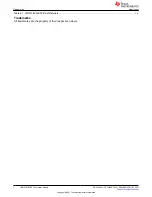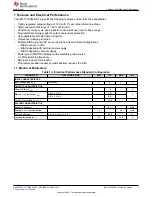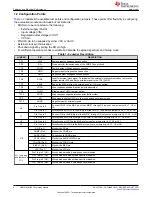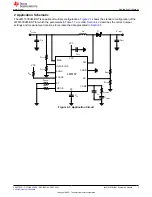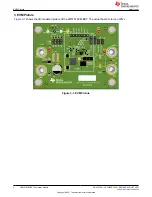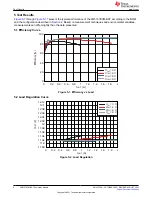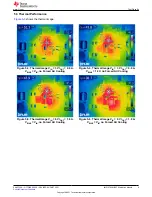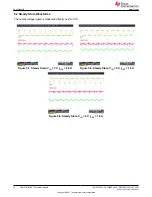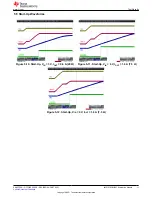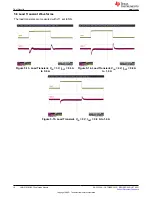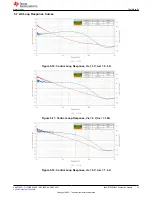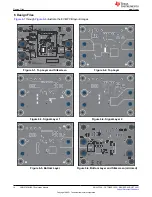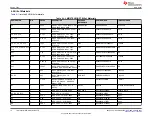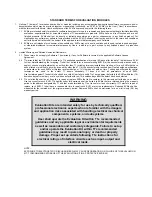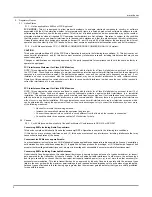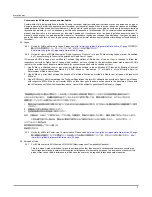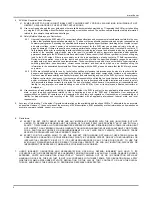
4 Test Setup and Procedure
4.1 Test Setup
shows the correct jumper positions to configure the evaluation module for the typical application, as
. The correct equipment connections and measurement points are shown in
Table 4-1. Standard Configuration Jumper Connections
JUMPER
POSITION
J7
Jumper from pin 2 to pin 3 (VIN to BIAS)
J11
Jumper from pin 3 to pin 4 (HS)
Power Supply
+
-
Ammeter 1
A
COM
Ammeter 2
A
COM
Electronic Load
-
+
Voltmeter 1
V
COM
Voltmeter 2
V
COM
Figure 4-1. Test Setup
4.2 Test Equipment
Power Supply: The input voltage source (VIN) should be a variable supply capable of 0 V to 10 V and source at
least 10 A.
Multi-meters:
• Voltmeter 1: Input voltage, connect from VIN+ to GND.
• Voltmeter 2: Output voltage, connect from VOUT+ to GND.
• Ammeter 1: Input current, must be able to handle 10 A. Shunt resistor can be used as needed.
• Ammeter 2: Output current, must be able to handle 2 A. Shunt resistor can be used as needed.
Electronic Load: The load should be constant resistance (CR) or constant current (CC) capable. It should safely
handle 2 A at 12 V.
Oscilloscope: 20-MHz bandwidth and AC coupling. Measure the output voltage ripple directly across an output
capacitor with a short ground lead. It is not recommended to use a long-leaded ground connection due to
the possibility of noise being coupled into the signal. To measure other waveforms, adjust the oscilloscope as
needed.
Test Setup and Procedure
SNVU739A – OCTOBER 2020 – REVISED AUGUST 2021
LM5157EVM-BST Evaluation Module
7
Copyright © 2021 Texas Instruments Incorporated


